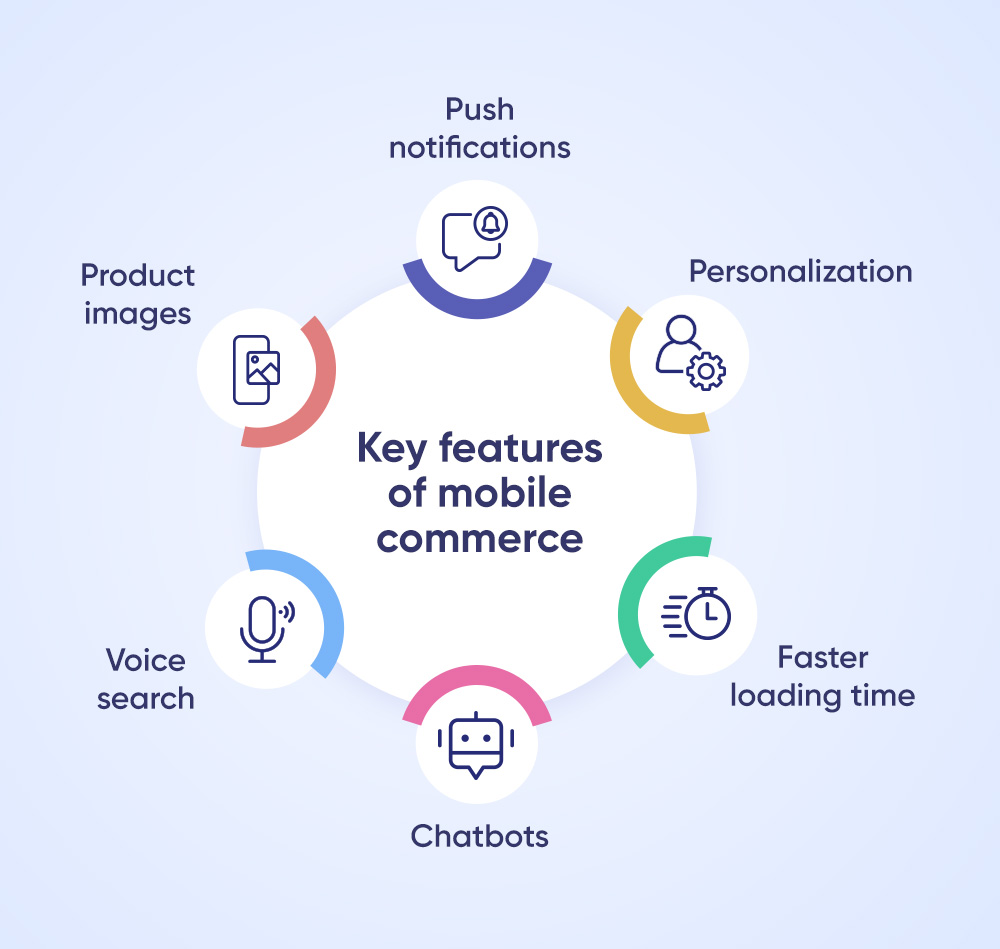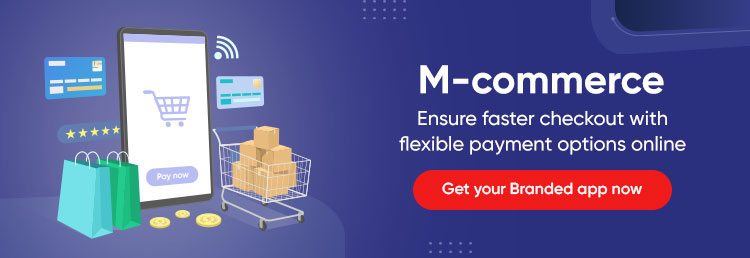A brick-and-mortar store owner can now set up branches in 1000 million locations from Kanyakumari to Kashmir. Does this statement sound implausible and unrealistic? M-commerce will make this miracle happen!
One of the most significant outcomes of the COVID-19 pandemic was transforming businesses online, with the prime motive of achieving contactless ordering, delivery and payment processes. E-commerce platforms were the pioneers as far as online purchases are concerned. M-commerce though has a conceptual base of e-commerce has its unique applications which have captured almost three- fourths of the global population online. M-commerce is in its incipient stages and over the years to come we can witness a great leap with consistent research and upgradation.
What is mobile commerce (m commerce)?
M- commerce or mobile commerce is performing online shopping, bill payments, and banking via wireless, mobile devices like smartphones, tablets, etc. Be it the festival time congestions or unfavourable weather conditions, shopping and transacting through the universally available mobile phones is captivating. The mobile compatibility of business processes and the penetration of mobile internet make m-commerce an emerging adoption among business owners and end consumers.
Types of m-commerce:
Mobile shopping: Besides shopping instore, customers look for shopping through their preferred channels like social media, apps and websites. M-commerce comes handy for an omnichannel experience.
Mobile-apps: Instead of getting tied with aggregators, retailers irrespective of their vastness can build a native app and reach their customers with their brand identity, thus being available both for instore and online purchases. Also, they can manage orders and deliveries seamlessly with mobile-apps.
Mobile payments: Contactless payments were a booming trend in the COVID-19 scenario and are now preferred for safe and secured payments online through mobile devices. Pay bills, book tickets, and transfer money to other bank accounts from anywhere.
Mobile marketplace: Sellers can set up their online stores in the Marketplace app. Buyers can engage with more sellers and can get a versatile shopping experience, by making wise comparisons and arriving at the best deals.
Key features of mobile commerce:
Listed below are some of the important key features of m-commerce that assures growth by boosting sales and enhancing customer base.

Push notifications: Engaging customers with push notifications and keeping them updated with the recent developments in products and services will increase the app retention rate.
Personalization: Even while logging into mobile shopping apps, it is easy to track the demographics of the customers, and you can use it to set genuine and meaningful offers and discounts.
Faster loading time: Mobile apps load in a matter of 2 seconds, whereas web apps take between 5 and 8 seconds to load, ensuring easy and quick access to the application.
Chatbots: AI-powered chatbots help achieve genuine interactions with customers and provide support and responses to queries without stereotyping, enhancing trust.
Voice search: Voice recognition and conversion into text through Natural language programming (NLP) makes users search for their items quickly and helps you boost sales.
Product images: Good visualization of your products can be achieved with high quality multi-dimensional images and available colors to perceive what the product will look like.
Benefits of m-commerce:
Mobility: M-commerce offers a two-way benefit to both owners and customers. Owners can reach the customers instantly by messages through SMS, chat-apps, and push notifications. Customers can scroll through and pick up products to order on the go whereby saving time. M-commerce has a wider target audience as customers are with their mobile phones all through their active hours in a day.
Better shopping experience: One does not need to visit physical stores for every purchase, instead gets a wider choice to access different stores just by a single tap on the mobile. There is no need to travel from one store to another when the product is unavailable either.
Convenience and comfortability: Gone are the days when mobile phones were a luxury. Mobile phones have now become a necessity and almost every individual’s possession. It is an age-old technology which everyone is conversant with. All time availability of the device gives the freedom of ordering from anywhere, anytime.
Omni-channel experience: Though the ever-growing advantages of online shopping are captivating, brand affinity cannot be totally written off. M-commerce helps getting closer to customers by being available through the branded apps on the home screen of their mobile devices round the clock. Customers can place orders and get them delivered at their door-step.
Payment processing: With Online payments going trendy; mobile wallets, UPI and Net banking options almost cover the potential online customer base for payments, achieving faster checkouts.
PWA, Progressive Web Application: When customers wish to have a native app experience in the larger screen it is always possible with progressive web app extension where you can experience the same app through a web address on the browser. Also customers don’t have to worry about the storage space of their mobile phone getting exhausted.
M-Commerce Vs E-Commerce

Limitations of m-commerce :
- Major issues that impede the adoption of m-commerce are the fatiguing small- screen navigation and the inability to cater for a responsive storefront, to name a few.
- The quality and speed of mobile internet do not follow a stable pattern, hindering the flow of the shopping process. The lesser penetration rate of mobile internet in rural areas also poses a barrier to the progress of m-commerce.
- If the app experience is not unique, the user can leave the app unaccessed permanently. When multi-factor authentication is not enforced for app downloads, there may be threats to critical customer data that make it difficult to trust the brand.
As m-commerce is still in the inception stage, a lot more research is awaited and the drawbacks are expected to be eradicated shortly.
Future of m-Commerce in India:
It is not you and me, every second individual in the vicinity has a mobile, and the mobile number is like one’s fingerprint that has become an indispensable identity across the globe. It is essential to study the growth rate of mobile internet users to forecast the advancement of m-commerce in the next five years or so.

Considering the current scenario in India, out of around 1300 million total population, 900 million people are mobile internet users, which clearly indicates that three- fourths of the total population are associated with m-commerce in some way or the other. Also, there is a possibility that almost the total purchasing population will adopt m-commerce platforms in the years to come. Set up your m-commerce store in 1000 million locations in India! It is not a miracle anymore!
Are you aware that you can take your business online without compromising your identity and control, and give the same instore experience with your own branded app? Gofrugal’s mobility solutions for online ordering, payments and deliveries will take you to the wonder-world of mobile-apps, where you can display products with stock availability, receive orders, integrate payment gateways, schedule deliveries with terms and conditions prescribed solely by you. Setting offers and recommendations, agile support through chatbots, PWA compatibility and lot more AI-powered customer-friendly customizations come with the app build process. Step into the m-commerce world in just 5 days and experience the depth of digital transformation! All you need is a stable and sustainable ERP.

